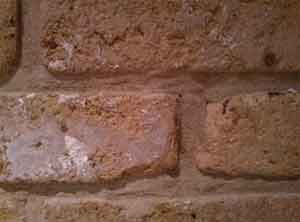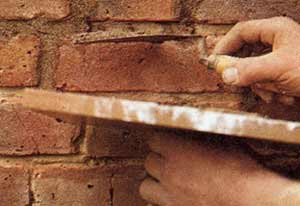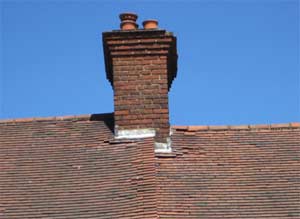Problems That Wet Walls, Damp Walls and Cold Walls can Cause
Wet walls can cause a whole host of problems in your house, and can equally be caused by a number of different things, from penetrating or rising damp in your walls through to issues with your external wall or cavity wall’s structure and a possible leak somewhere in your house.
It may be that you have entire wet walls, damp walls or cold walls or that you just have wet patches or cold spots on your walls, maybe with some black mould patches.
How your issues manifest is a good indication of what’s causing it and how to fix it.
We discuss these indicators in more depth as well as the remedies that will dry out your wet walls and cold and damp patches.

Wet patches on walls can encourage black mould growth
The first thing you need to do is establish what’s causing your wet or damp walls. You can have a pretty good idea of this depending on how damp your walls are and whether it’s a whole wall issue.
First, test the dampness of your wall using a damp meter preferably, or failing that, the back of your hand. This will help you to establish where exactly the damp areas are.
Wet Wall, Possibly With Patches of Black Mould
If the wet walls are in a room in your house that’s below ground, this might be caused by a leak in your water main, or the water main attached to your neighbours’ properties.
You can get your water supplier to test the water free of charge and they’ll be able to determine whether the water is sewage, from the mains supply or groundwater.
A list of water suppliers is available on Water UK’s website.
If the water looks like it’s coming from the ceiling and then onto your wall, it may well be the central heating system that’s leaking. A lot of the pipework will be going through your floors.
You can check your pipes manually or get a plumber to do a pressure check to check that your pipes are free from leaks.
The leak may also be caused by one of your appliances or by a faulty waste water pipe or surface drain.
Make sure you fix the source of your leak before attempting to repair the damage done to your walls by the water.

Check behind your appliances for any leaks that making your walls damp
Damp Patches Only in Your Lower Wall Area, Possibly With Black Mould
This indicates that you may have what is known as rising damp. This is where water from the ground underneath or beside your house rises up through your brickwork through capillary action, creating damp in your walls which manifests as damp or wet patches or a whole damp section of wall just above your skirting board.
These damp areas can also be marked out by yellowish or brownish stains (known as a ‘tide line’) and can encourage the growth of mould which turns your damp patches into black mould patches.

Rising Damp can cause wet patches on your lower wall area characterised by a ‘tide line’ of brown or yellow staining
Houses usually have what’s called a Damp Proof Course (DPC) installed at the time of building to stop this moisture from the ground rising through your walls.
It’s a waterproof layer across your brickwork at around 6 inches above outside ground level. Rising damp can occur when this DPC is missing, broken or bridged.
Bridging occurs when debris inside your cavity wall (usually left by builders at the time of construction of your property or it can build up over time) is taller than the level of your DPC, allowing the damp to rise up through this debris and around the DPC to re-enter the wall above the DPC and carry on rising.
Damp proof course bridging can also occur externally if an outside object such as the ground in your garden or an outside series of steps has contact with your house’s external wall both above and below the Damp Proof Course.
Again, this allows moisture to travel up and around the DPC to re-enter the wall above the DPC and carry on rising, creating damp in your walls.

Damp Proof Courses are built into houses to stop damp rising up your walls
How to Fix Rising Damp
First, you should check to see if your house has a DPC. If not, one will have to be inserted. If your house does have a DPC, you need to check that it hasn’t been bridged either internally or externally.
To check for debris inside the cavity you will have to remove one or two bricks from your outside wall at around 6 inches height. Do not remove more than two bricks – if you need to do this, consult a builder or surveyor for advice.
More information on removing bricks is available in our Replacing a Brick Project.
Once you’ve removed your bricks, have a look for any debris with a torch.
Remove any debris that you find by hand wearing thick gloves to protect your hands from sharp objects, dragging anything out that’s out of reach with a crowbar or similar tool. You can remove finer bits of debris with a vacuum cleaner.

Remove a brick from your cavity wall to check for debris bridging your DPC
It’s much easier to check your DPC for external bridging – make sure that your garden’s ground isn’t above the level of your DPC, and look out for external structures such as steps that also reach above the DPC. Remove these if possible.
If you haven’t got a DPC, or you can’t remove an external bridging structure that’s present or you haven’t found any debris or bridging, but you have rising damp issues (indicating that you have a broken DPC) you will need to insert a new DPC, above the old one if you already have a DPC in place.
Inserting a DPC isn’t as hard as it sounds – the easiest and most popular retrofit method involves drilling holes in your external and internal masonry and injecting a chemical cream DPC into those holes.
The chemical mixture is absorbed by the brick and joins with itself to form a waterproof layer across your brickwork. You then fill up the holes with mortar which has a water proofer added to it.
How to insert your chemical DPC will largely depend on the type of chemical cream DPC you use. We describe the process of installing a cream DPC in our project here.

Insert a new DPC by injecting a chemical DPC cream into your walls
Damp or Cold Patches all Over Your Wall, Possibly With Black Mould
It may be that this is Penetrating Dampness caused by faulty pointing or flashing on your house’s external structure, rusty wall ties in your wall cavities, a poor cavity wall insulation job or the fact that your external walls are exposed to extreme levels of rainfall.
If your damp wall is on or around your chimney breast, visit our Chimney Breast Damp Project page.

Damp patches all over your wall are typically caused by penetrating dampness
Faulty Pointing, Rusty Wall Ties, Debris on Wall Ties and Poor Cavity Wall Insulation
Get out and have a look at your external wall that corresponds to the damp or cold internal wall.
Have a look for any cracked pointing or bricks. If there are cracks in the pointing, this could be down to anything from subsidence or general movement of the house through to rusted wall ties in your cavities.
Cavity walls usually have ties which tie the two walls together and support them. Over time, these can get rusty, which causes them to expand and cracks the adjoining mortar.
Cracks in your mortar allow rainwater to enter your walls and remain there as damp which can travel to internal walls and present as damp or wet patches.
Even if not much water is allowed to enter in the crack, this ingress of outside air can cause the corresponding patch on your internal wall to be colder than the surrounding internal wall area, creating a cold patch which attracts condensation and encourages black mould growth.
A cold patch can also be created on your internal wall near your wall tie if the tie has been loaded up with debris like mortar. This usually happens during the building process, but debris can also accumulate over time.
This debris provides a bridge for any moisture on the inside of the external wall to travel to the internal wall, again creating damp and cold patches on your wall which encourage mould growth.
Similarly, if there are any gaps in your cavity wall insulation as a result of your insulation being installed incorrectly, this can create cold patches on your walls which attract condensation and mould.

If debris gathers on your wall ties this can create damp and cold patches on your walls
How to Check For and Fix Faulty Pointing, Wall Ties and Cavity Wall Insulation
If there are any faults in your pointing, get this checked out by a reputable builder and repointed. Your builder can check the wall ties behind the cracks at the same time and replace any that are rusty.
If your pointing is fine you can check if any wall ties are causing your damp problems by using a metal detector to see if there are any ties near your damp areas.
If there are, you can take a look at the tie by removing one or two bricks near the tie (information on how to remove bricks is mentioned above).
Once you’ve removed your bricks you can check your tie for any rusting and debris buildup. If you need to replace your tie, follow the instructions in our Replacing Wall Ties Project page.

Get your pointing fixed to prevent water from entering your external walls
You can also remove bricks to check for any gaps in your cavity wall insulation. If there are gaps, you can get your cavity wall insulation reinstalled but this may involve removing the original insulation which can prove difficult.
Consult with a couple of reputable insulation installers to get their opinion on what is best to do in your particular situation.
Faulty Flashing, Guttering or Roof Tiles
It may be that your damp walls are being caused by faults in your roof or guttering.
You can use a pair of good binoculars or a drone with video camera to check your guttering, the flashing on your roof and chimney stack and your roof tiles for any breaks or damage.
If there are any breaks, these may well be allowing water into your roof, where it can run down your rafters and enter your walls.

Broken roof tiles could be letting water into your house, creating wet patches on your walls
How to Fix Faulty Flashing, Guttering and Roof Tiles
If you do have faults in your flashings you can either get these replaced (the better long term option but quite expensive) or you can use flashing tape to seal the cracks yourself. We’ve used SylGlas in the past and have found it to produce a good level of waterproofing.
If your guttering is faulty, you will need to replace it. There’s more information on replacing plastic guttering available in our Replacing Plastic Guttering Project page.
If one or more of your roof tiles is cracked you will have to replace these. How you replace the tiles will depend on what kind of tile you are using.
Some tiles are nailed to the roof timbers and attached with mortar, whereas slate tiles are attached to the roof with a metal strip. More information on replacing roof tiles is available in this Replacing Roof Tiles video.

Repair your flashing either using lead sheeting or cheaper flashing tape to stop water getting into your roof and walls
Extreme Rainfall Exposure
In some circumstances the sheer level of rainfall your walls are exposed to means that even though your walls are sound, they soak up water and become damp, possibly transferring this dampness to your internal walls.
If you think that this is the case, you can waterproof your external walls using a liquid water proofer . More information on how you can waterproof your external walls is available on our Waterproofing External Walls Project page.
Repairing the Damage Caused by the Damp in Your Walls and Preventing Further Wet Wall Issues
Water getting into your walls and causing damp patches to form can cause a range of visual and structural issues in your walls.
After you have solved the cause of your damp you will need to resolve the issues that the damp has caused before you redecorate. Again, the solution very much depends on the problem.
After the cause of your wet walls has been sorted you need to find out whether the plaster on your internal walls is sound.
Tap on your plaster – if it sounds hollow then it is blown, and clearly if it is crumbling away then you can again class your plaster as having blown.
If there are any crunchy looking salt deposits present in your plaster, it’s likely that this will have blown the plaster too. If this is the case, read on to the next paragraph.
If your plaster is intact, then you may well be able to leave it without replacing it, just make sure you allow it to dry out thoroughly first (this can in some cases take several months) and then assess it.
In reality even if it looks ok, it’s always better to remove the affected area of plaster and re-plaster from scratch as this way you can ensure that the issue does not reappear in the future.
If you have any mould growth on the wall surface or there are any salt deposits (either presenting as white staining or larger crystals) then you should treat these before you redecorate as if you don’t then there is the good chance that these issues will reappear at some point in the not too distant future.
When it comes to salts we use a Salt Neutraliser. Paint the solution onto your bare wall (after removing any damaged plaster) and allow it to dry. Once dry you can then go ahead and replaster.
If you find that you also have black mould present on your walls then this will need to be removed before you attempt any redecoration.
We advise that you use a mould killer and cleaner to ensure that all traces of the mould are removed. There are quite a few different product options of this nature on the market.

Use an Anti-Mould cleaner and salt neutraliser to treat your wall’s surface before redecorating
If your plaster is not sound, as mentioned, you will need to strip this back to the bare wall and replaster (ensuring you allow the wall to dry out first).
If you have any mould or salt deposits on your bare wall, again treat these with an Anti-Mould Cleaner and Salt Neutraliser as mentioned above.
You can alternatively add a salt neutraliser to your plaster – some plasters actually come with a neutraliser already added.
If you have a serious problem with salt deposits in your old plaster, it may well be worth fitting a mesh membrane against the bare wall before your replaster over the top of it as this will ensure that no further salt deposits are allowed to penetrate your newly decorated surface.
You can find out how to fit a mesh membrane to your wall on our Mesh Membrane Project page.
Alternatively, you can apply a waterproof breathable render to your wall before you replaster. You can check that any render product you use meets industry standards by visiting the British Board of Agrément’s site.

Fit a mesh membrane to your wall to prevent damp from washing salts into your plaster
The cause of wet walls can be numerous however if you do have wet walls in your home then it is highly important that any issues are resolved quickly before further problems develop.

